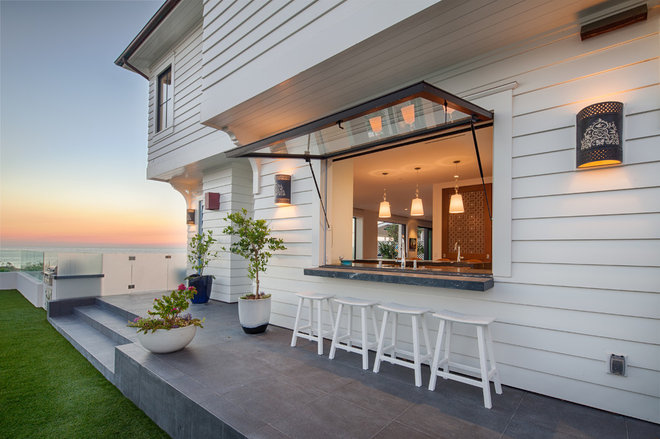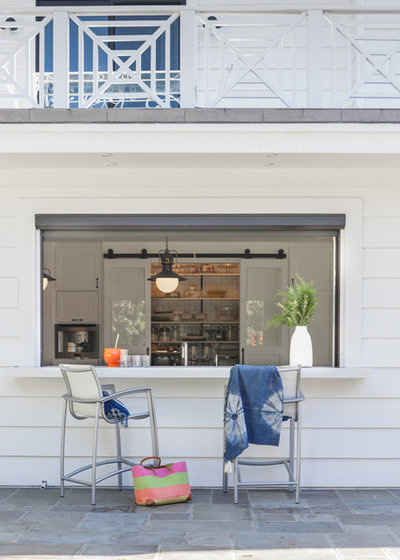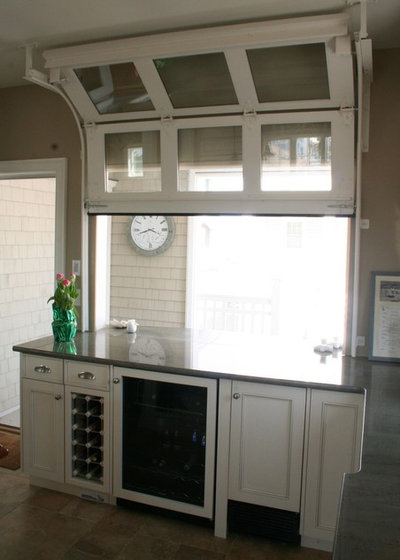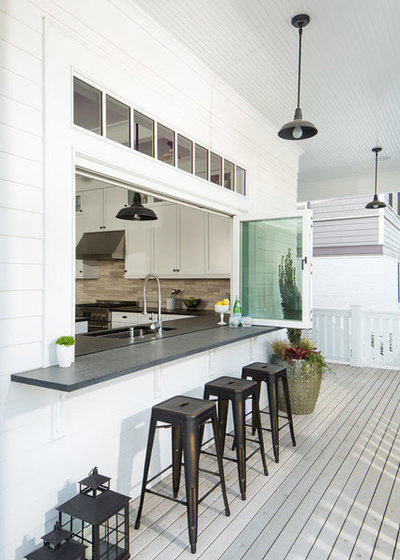
Once it is unlocked from the inside, all you need to do is gently push the sash out. The shocks take care of the rest, with the window lifting to a resting height that’s just short of a 90-degree angle from the house. To close, the operator uses the exterior handles and slowly pulls down on the sash until the shocks are activated, for an easy and weightless close.

With this window, the bottom sill can be removed, making it a true pass-through. When removed, the window has no bottom track or frame, allowing someone to pass items to the outside without having to lift objects over any obstructions. When closed, weatherstripping on the sash meets the countertop for a nice, tight seal. And if you live someplace where people joke that “the state bird is a mosquito,” there is a screen option available; the screen tucks into the frame when you want an open pass-through.




The windows are made from clear northern white pine wood. When open, they are secured in the up position by cabin hooks (these hooks were not yet installed on this photo shoot day). The hooks are secured to beams in the ceiling. Eye screws on the window sashes hook into the cabin hooks.

As for the window, the interior designers came up with a brilliant solution. Cut-to-size (9-foot-long) pocket door opening for the window. Then used the kind of motion sensor that makes grocery store doors open like magic — a wave of the hand makes the window slide open, pocketing in the wall. The flick of a switch lowers a screen down. This eliminated any awkward leaning, cranking or kneeling on the countertop to get the heavy window open.







